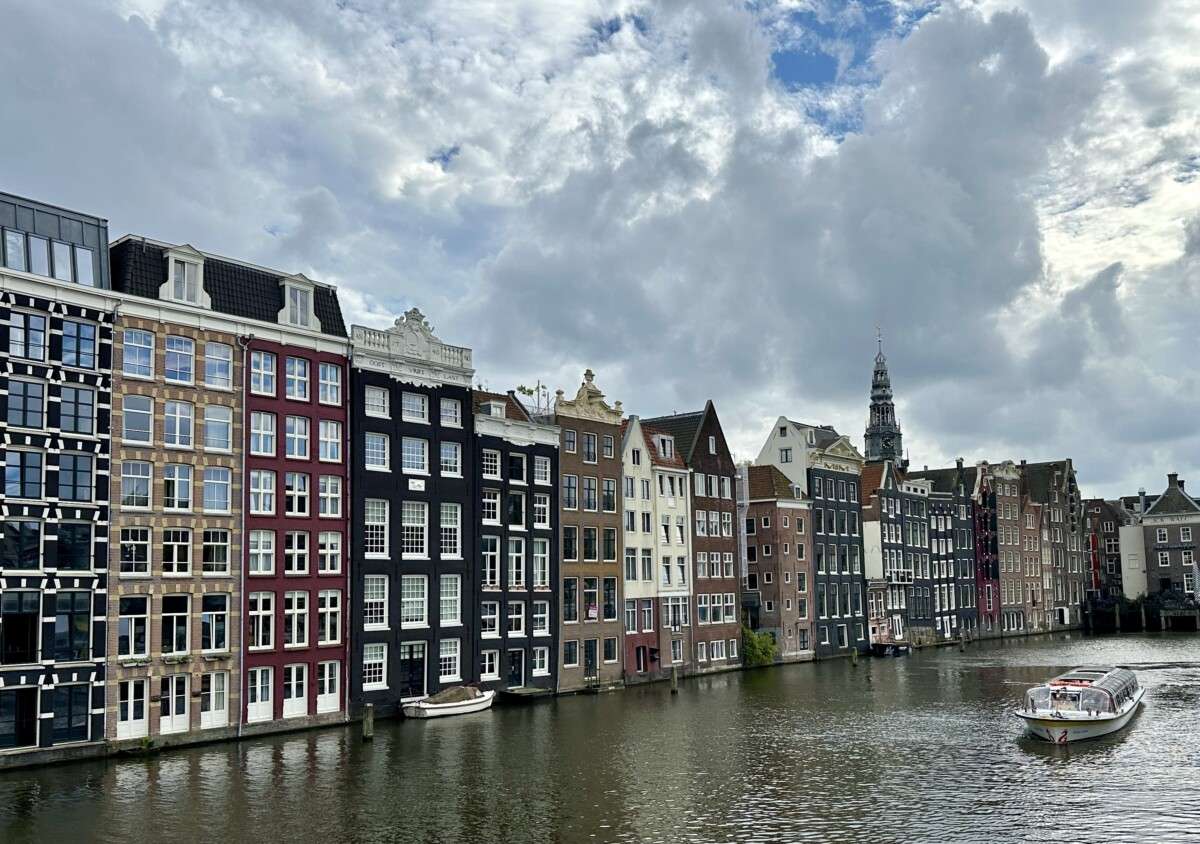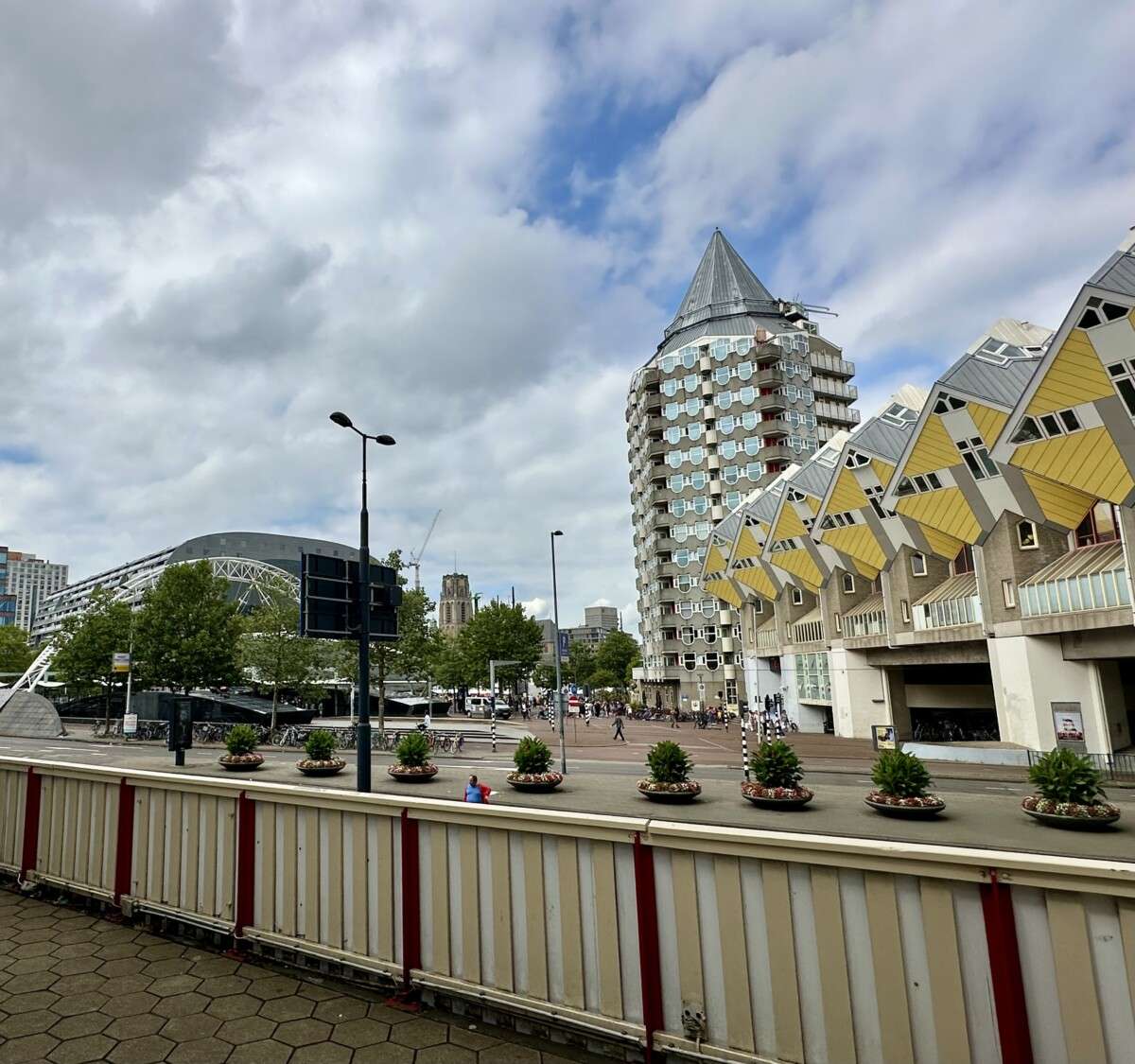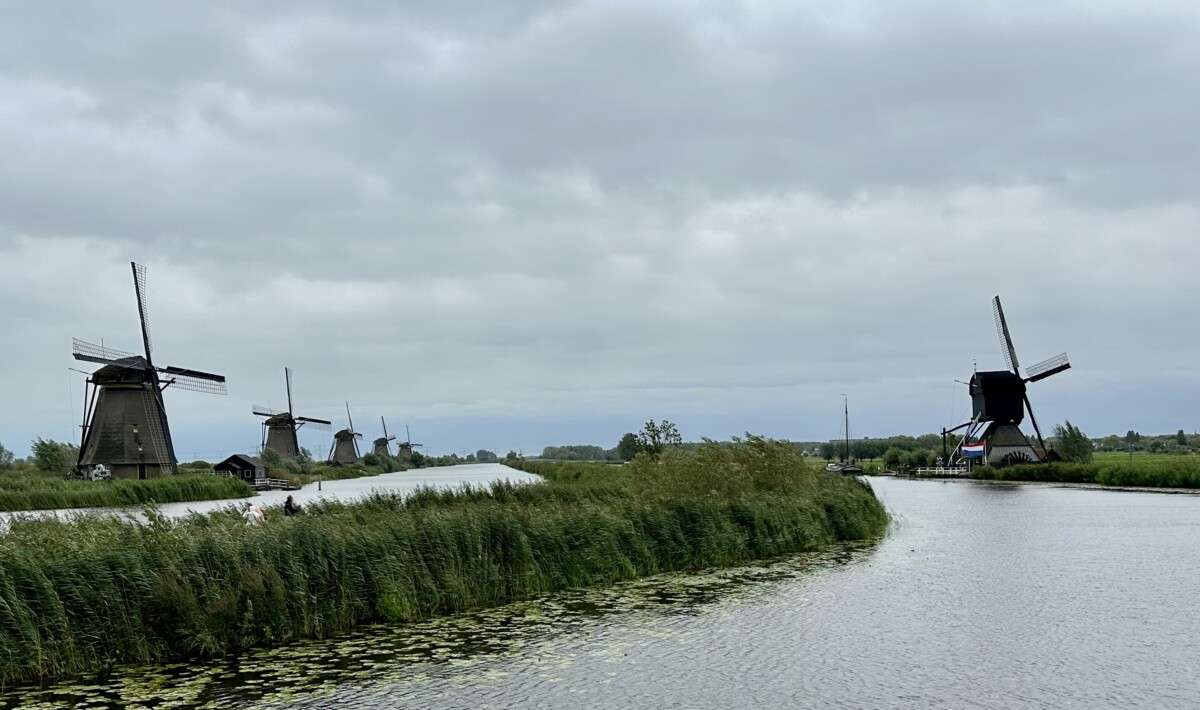This summer Joel and I decided to get out of Las Vegas to escape the heat. We’ve wanted to explore Europe for awhile and found a last minute flight deal to Frankfurt. So, here we are!
On our first day we signed up for a highlights guided walking tour of the city. Our meeting spot was just a short walk from our hotel and we were quickly charmed by everything we saw along the way.

We began in Romerberg, the town hall square of Frankfurt am Main (Frankfurt’s official name, which translates to Frankfurt on the Main) and the center of the old town since the Middle Ages. The square was and has since been the place of important events, from the Frankfurt fairs, to the imperial coronations of the early modern period, to the Frankfurt Christmas market and to large social and political rallies.

The Romer clock tower building (below) functions as City Hall. Our tour guide, Jennifer, told us that German law requires all couples to have a civil ceremony at their local registry office. They can then choose to follow this with a religious ceremony or reception. So, in addition to being City Hall, this beautiful building is where every local couple gets married.
While the building looks old it is actually quite new – “due to the heavy bombing of Frankfurt am Main in World War II, most of the city’s old town was destroyed. Efforts to rebuild parts of the historic fabric of the old town began in the 1950s with the Römer city hall, which was built as a modern office building behind the old façade that was still standing after the war.” – Wikipedia

Across from the Romer building stands a water fountain with a statue of the goddess Minerva on top. We saw many people filling up their water bottles as they walked by. There is a small sign next to it with a QR code that provides the history of the fountain.

“In 1481, an open drawing fountain was built here for the first time. This early existence is evidenced by a document about the house Zum Ullner. In 1750, the fountain was converted into a pump fountain, the old fountain trough was replaced by a smaller one.
Further changes took place in 1893/94. Since then, the figure of the goddess Minerva has been standing on the cornice of the fountain. It is considered a symbol of wisdom, the art of war, the arts and craftsmanship.
The Minerva Fountain was destroyed in the war in 1944 and removed from the Römerberg in 1951. The reorganization of a largely historically faithful copy took place in 1983.” – City of Frankfurt

Jennifer, our tour guide, told us that Frankfurt had the largest number of half timber style buildings before WWII. Unfortunately, this style of building is primarily made of wood and straw – about 80% of them burned during the war. However, there has been a concerted effort to rebuild in the old style of buildings from before the war. The buildings off the town hall square (behind the Minerva water fountain) were built in the early 1980s.

The buildings in these pictures (above and below) are brand new since 2018 though they have all been built to resemble older, original buildings from before the war. Whenever possible, they followed any design documents still in existance to match as close to the original as possible. Though, Jennifer told us they do all meet today’s building codes (fire, water, etc.).

Jennifer pointed out some distinct features of the New Red House building. At the very top it has a little cover over the window that looks like a nose from the side (you can see it more clearly on the gray building next to it below). Also, there is no bottom floor. She told us this building had been the butcher guild hall so there were many documents and photos of it that were used during the rebuilding process.

Nearby, Jennifer pointed out a gold stone in the sidewalk. It is called a Stolpersteine, or Stumble Stone. She told us it is a memorial to the victims of the Nazi regime. The gold stones are placed in front of the building where the person it commemorates lived.

We learned that anybody can have a STOLPERSTEIN installed. And, according to their website, “STOLPERSTEINE are placed for people who were persecuted during the Nazi era. The inscriptions briefly outline the most important stages of persecution…Anybody who wants to have a STOLPERSTEIN installed has to conduct the necessary research. We recommend that you contact archives and historical societies to find out exactly what happened to the victims and their families as far as possible.”
Their website has information about cost and who to contact if you would like to support this project.

Some parts of the old city were able to be saved from the war. If part of a building was saved, City ordinance says it must be set apart from the new construction to make it clear that is was an original/old piece. You can see an example of this in the picture below.

As we walked through the city we kept stopping to stare at the buildings. Even small alleyways were pretty.


The house of the Golden Scales was originally built in the 1600s by a wealthy man who sold spices. Because of how elaborate the house was, extensive documentation was available when it was rebuilt. Apparently at the time it was built locals hated it. They said it was built too tall, too bright, and it was built right next to and too close to their beloved church.


Today, the first floor is a bakery, which is how we learned that Germans also have a tea time (like the British). For some it is daily, but most Germans observe their tea time on Sundays around 3 p.m. During tea time a crown cake (see below) is the dessert of choice.

In 1953, after the town had been decimated by bombing during the war, Roman ruins were found on Catheral Hill next to the House of the Golden Scales. These ruins date back to 3000 BC. Today, these ruins have been preserved and you can tour them on certain days of the week.


The Frankfurt Cathederal is dedicated to St. Bartholemew. It stands out among the buildings and was a great landmark for us when we walked around town.

St. Bartholemew was killed in a pretty gruesome way and a wall relief of him on the side of the cathederal shows him flayed skinless (Eww!). Also, for 3 euros, you are able to climb the 328 steps to the top. We didn’t have time during our tour and never made it back to do the climb to the top, but we heard the views are amazing.



Jennifer told us that while this is called the Frankfurt Cathederal, it is not a real cathederal because it does not have Bishop. Services are held in German and Croatian.

It was carved in the early 1400s from solid stone. Walking in I was in awe at the height and grandure of the space. I tried to capture it in the next two photos.


Here is some information from inside the Cathederal:
“Like many German cities, Frankfurt was a target of the Allied strategic bombing campaign during World War II. On March 18th and 22nd, 1944 the British Royal Air Force carried out two of the war’s most destructive air raids. Of the city’s more than 2000 half-timbered buildings (Fachwerkhäuser) only one remained intact. All others went up in flames, while skeletons of masonry were left standing where there had once been buildings of stone. Nearly all the churches in the city were destroyed, except the Cathedral, which suffered only minor damages. Approximately 1500 people lost their lives through the two Allied bombings in March 1944.”

Here is information from the Cathederal corresponding to the numbered pictures below:
2 – Summer 1945 or 1946, the South transept of the Cathedral and the Leinwandhaus in ruins.
3 – A view of the fortification wall of the Chapel of Our Lady, which kept the Altar of the Dormition from being destroyed, as seen from the nave.

4 – View from the High-Choir along the western wall of north transept and towards the nave with covered gravestones
5 – 1959 – What had been a bustling neighborhood west of the Cathedral is an empty square. There is nothing to remind us of the lively, crowded, narrow alleys of the Old Town.
During our tour we stopped by the courtyard of an apartment building in the style common for Eastern Europe. It is much more stark than the Gothic cathederals and half-timbered buildings seen throughout Frankfurt.

We learned during our tour that Jews were confined to a walled-in ghetto during medieval times. Today, this area is the site of the MUSEUM JUDENGASSE – the Jewish Museum (MJ). According to their website, “When the city of Frankfurt wants to build a new building for the municipal utilities in 1987, one comes across the foundations of houses of the former Judengasse, the oldest Jewish ghetto in Europe.
The first Jewish ghetto in Europe was located in Frankfurt. Founded in 1460, more than 3000 people lived here at times. In the Museum Judengasse, this story comes back to life.”

On the side of the building is a small sign placed here by American soldiers who occupied the area after the war.

Today a wall surrounds the Old Jewish Cemetery. It was built on top of the foundation of the original medieval wall surrounding the Jewish ghetto.



The wall surround the Old Jewish Cemetery is called the Börneplatz Memorial Site. Almost 12,000 individual plaques are on the wall. “It commemorates Jews who were murdered during the Nazi era or died as a result of persecution, and who were associated with Frankfurt either by birth (Anne Frank is an example) or because they had resided there or were deported from Frankfurt.” – Wikipedia


Each plaque lists a person’s name, their date of birth and death, and where they were murdered, if known.

At this point in the tour Jennifer gave us a break and took us to Kleinmarkthalle, which is a large indoor market with about 62 vendors. We stopped to get a quick bite and use the free bathrooms.



On our way to our next stop of the tour Jennifer pointed out a medieval tower in the distance. She told us it was built in 1400. Honestly, it looked fake, like something you would find in Disneyland. However, we learned it is one of the few remaining medieval towers that once protected the city of Frankfurt, the Eschenheimer Tower is a well-known city landmark.

We all agreed that it looked fake because everything around it is so new. Joel and I walked over to it after the tour. It is now located at the center of one of Frankfurt’s busiest intersections.

And, of course, like so many other historical buildings around the world, today it has a new purpose – it is a restaurant and bar.



We were not surprised to see so many skyscrapers in a large modern city, however, it turns out that Frankfurt skyline is unique in Germany. Frankfurt am Main has 18 of Germany’s 19 skyscrapers. Yup, this is the only city in all of Germany with a skyline of skyscrapers. It is also home to the European Central Bank, and we often heard it called Germany’s Manhattan.

Jennifer joked that Frankfurt has so few skyscrapers they could count them.

Our tour took us for a short walk along the Main River, which meets up with the more famous Rhein River about 30 miles away.

The Iron Bridge (Eiserner Steg) is a pedestrian bridge built over the Main in Frankfurt in 1868. It is the only pedestrian bridge spanning the Main. And, it is now a bridge covered in thousands of “love locks”, a tradition where couples inscribe their names on padlocks, lock it on the bridge and throw the keys into the river.


Our hotel was right near one of the main downtown shopping areas. It was always bustling with people walking around late into the evening.

Thank you Jennifer for a very memorable tour. You made this city so much more interesting.


We saw graffiti everywhere around this city. But we were both amazed by how clean the city is. It has been our experience that when you are in an area full of graffiti you also find trash on the sidewalks. Frankfurt had so little trash that it was noticeable.

So long Frankfurt. You really surprised us in the best way possible.






Hallo Jeri und Joel!
Wunderbare Frankfurt Tour!
What a surprise and soooo glad you are having a good time in Germany….. so many places and regions of the country to see and immerse yourselves in the history and culture !
Stay longer and try to travel down south to Bavaria!
Have a most pleasant time and thanks for sharing your journey,
Rod and Sasha
Hi Jerilyn and Joel. What a wonderful travelogue. We had no idea that Frankfurt was so beautiful in so many ways and so interesting. We have been through the airport quite a few times but now we are sorry that we didn’t spend time in the city. Thank you for the Tour !! Continue to enjoy.
What a great travelogue! Now I have to go…haha! I didn’t know that Anne Frank was buried in Frankfurt. Aren’t the walking tours great. Where are you guys off to now? Wherever, have a super time.
We lived in Frankfurt for five years and Jill was born there. So nice to “revisit” it through your post. I can’t wait to see where your adventure takes you next.
Very interesting tour……it seems absolutely inviting to visit some day. Hopefully I’ll get there but first I must get to Italy, Spain, Barcelona and France. Can’t wait as I’m excited. Enjoy your stay and be careful.
I will definitely follow-up along your journey. Have fun and stay safe. Love you both.
What a great tour of Frankfort! Truly enjoyable. Mom
What a wonderful tour. Thanks Jeri and Joel. Germany is truly a remarkable country, full of history (some good, some not so good). However, today’s s Germany is a splendid place to visit and savor for years to come.